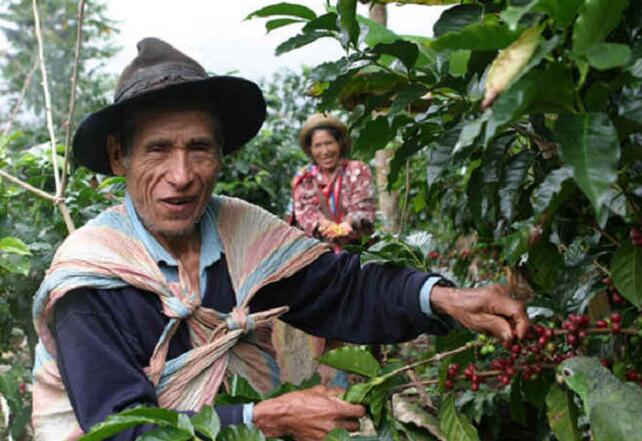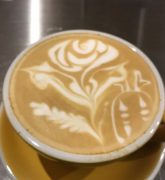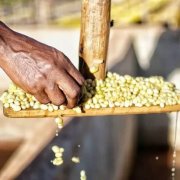Treatment of Brazilian Coffee Fruit Natural removal of Pectin
Professional barista communication, please pay attention to coffee workshop (Weixin Official Accounts cafe_style)
Brazil used to use the sun method in the past, and the quality varied greatly, making Brazil Yu synonymous with middle and low quality.
However, in order to improve the quality and reverse the image of the world's largest coffee producing country, the quality revolution was carried out in the 1990s, and the semi-sun method, which is unique in the world, was vigorously promoted.
Brazil's vast coffee fields are mostly harvested mechanically for economic reasons. When 75% of the coffee fruit in the coffee garden turns red, the mechanical harvesting is started, followed by the same pre-operation of washing, which is transferred to the sink to remove the floating beans, sifting out the sunk beans, and then using a large pulp sifter to remove the pulp and remove the pods covered with pectin. The next stage is separate from the washing method: instead of moving the sticky pods to a tank for fermentation, they are moved to an outdoor drying field. Due to the dry climate in Brazil, the sticky pectin on the pods hardens in about a day. Then use a lot of manpower to turn up and down, so that the pod is evenly dried inside and outside, so as not to regain moisture and stink. In about two to three days, with the help of the natural force of sunshine and dry climate, the pod can reach a certain degree of dehydration. Then further drying in a dryer, the moisture content is reduced to 10.5--12%, and then the pods are stored in special containers for about ten days, further ripening, in order to stabilize the quality, and then grinding off the sheepskin (i.e. pods) before export, taking out the coffee beans, and grading packaging.

Important Notice :
前街咖啡 FrontStreet Coffee has moved to new addredd:
FrontStreet Coffee Address: 315,Donghua East Road,GuangZhou
Tel:020 38364473
- Prev

The basic skills of baristas
Professional barista communication please follow the coffee workshop (Wechat official account cafe_style) 1, milking: the most important technology, although not very advanced, but requires a long time of practice, requires fine and smooth milk foam, do not have large milk bubbles. 2, the angle of milking: it is best to make a 45-degree angle with the steam sprinkler, depending on the thickness of the foam according to the fluctuation. 3. Heart!
- Next

Where does the coffee water treatment come from and why the semi-water treatment method appears?
Professional baristas please pay attention to the coffee workshop (Wechat official account cafe_style) water treatment method originated in Africa. Because the water washing method consumes too much water and causes serious pollution, the semi-washing method is produced, which means that the coffee fruit first removes the defective floating fruit through the flume, then removes part of the colloid layer, and then washes for an hour, due to the short immersion fermentation time, there is still pectin left on the bean shell.
Related
- What is the meaning of lactic acid fermentation with coffee bean treatment?
- How to judge the state of foam by sound?
- How does the latte pull out the unicorn pattern? Come to get for a little trick to improve the flower pull!
- Will flower pulling affect the taste of the latte?
- Do you know the history of coffee?
- The difference between honey treatment and sun washing what is raisin honey treatment?
- What kind of milk can a novice use to make coffee foam to keep the foam longer? The correct method and skills of milking tutorial sharing
- Why do washed coffee beans taste sour? Flavor characteristics of washed Coffee
- Introduction to the skill of how to practice the size and height of water injection around the circle of hand-brewed coffee
- How do beginners practice coffee flower drawing from scratch?

